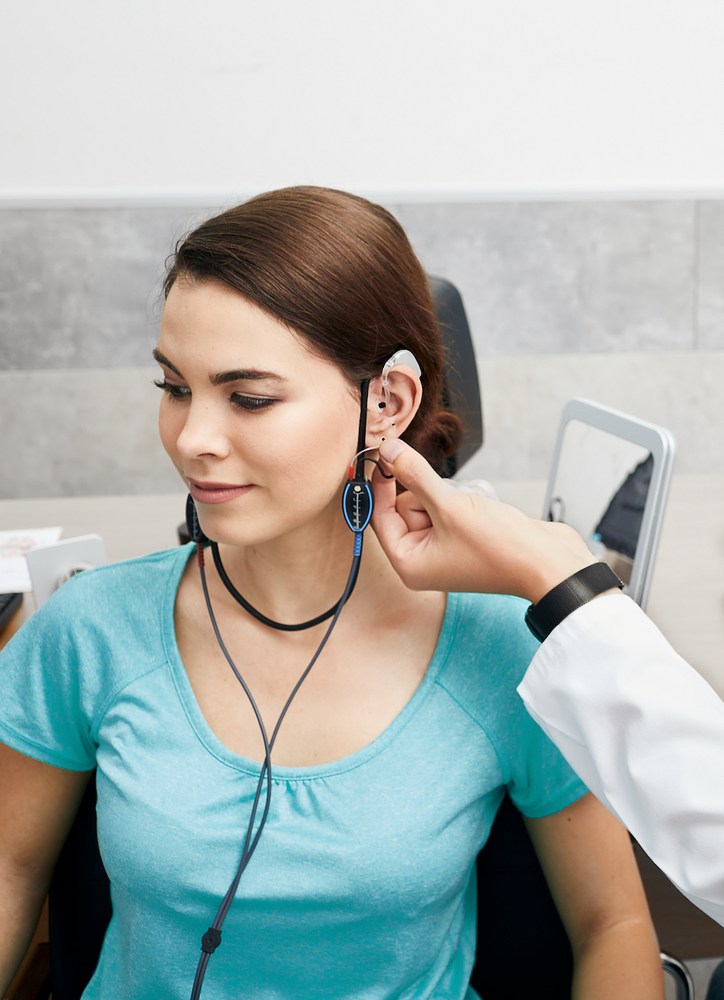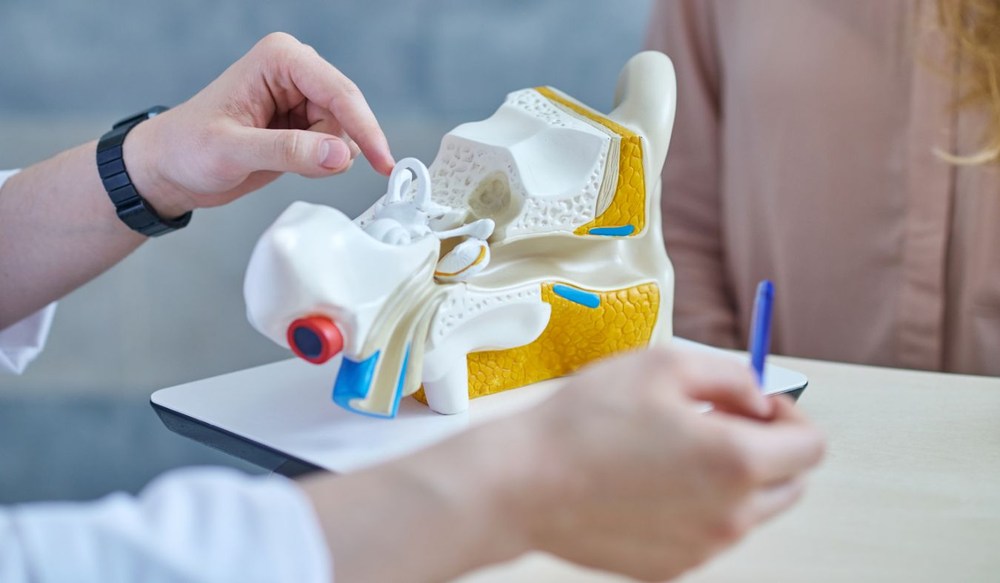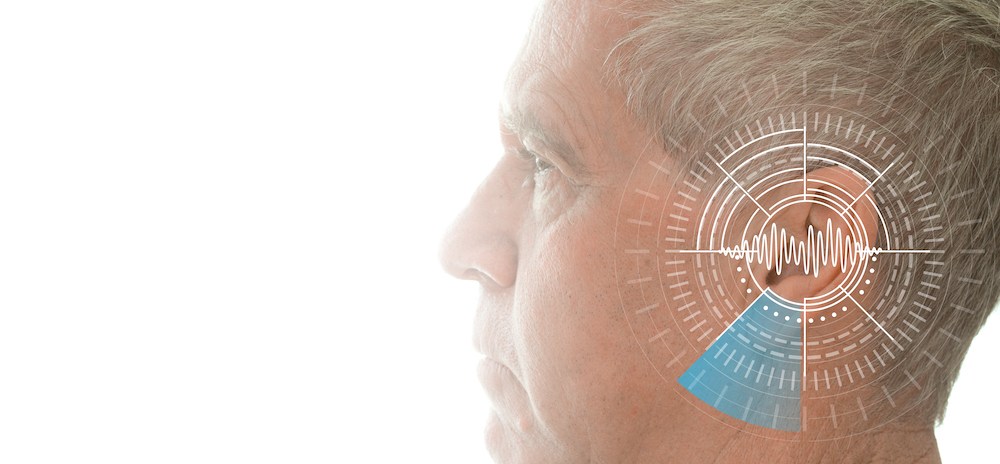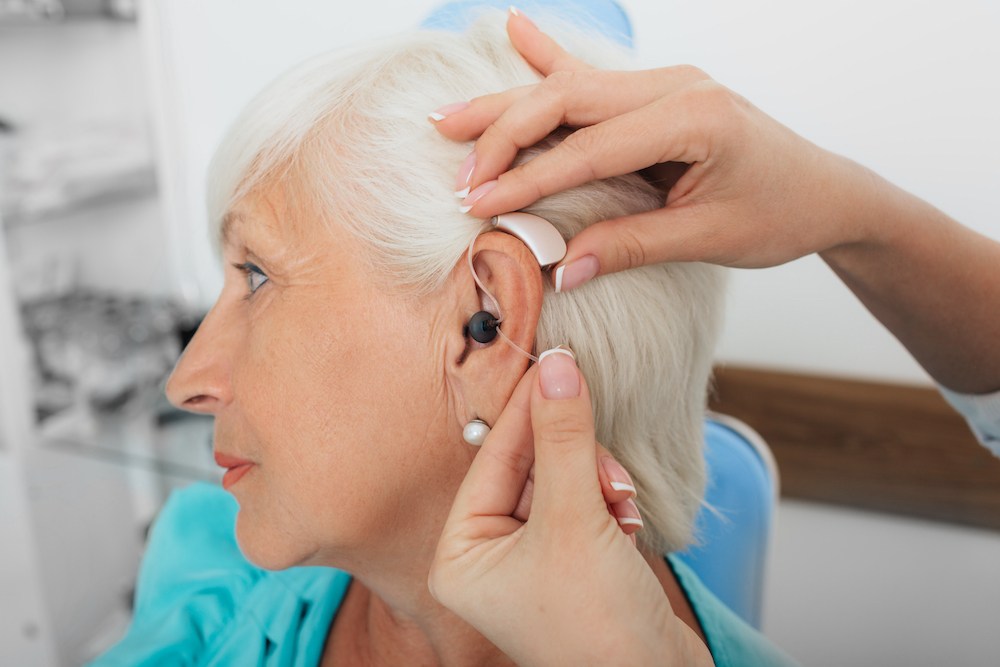The Role of Technology in Managing Hearing Loss
Technology has changed how hearing loss is managed, making it easier for

By: admin | July 24, 2024
Early-onset hearing loss can catch you by surprise, often going unrecognized because it progresses gradually and symptoms may be subtle, especially if you’re young. Unlike sudden hearing loss that is more immediately noticeable, early-onset hearing loss can develop over time due to various factors like exposure to loud noise, genetic predisposition or certain medical conditions.
The impact of early-onset hearing loss can be profound. It can affect academic or professional performance, making it challenging to engage in classroom discussions, meetings or social gatherings. Socially, it may lead to feelings of isolation or frustration when communication becomes strained, impacting relationships and overall quality of life.
Getting a hearing test is crucial in identifying early-onset hearing loss and understanding its progression. A comprehensive hearing evaluation can detect subtle changes in hearing sensitivity and pinpoint the type and degree of hearing loss present. Early detection allows for timely intervention, which may include protective measures to prevent further damage, hearing aids or other appropriate treatments tailored to your specific needs.
One of the earliest indicators of hearing loss is difficulty in understanding conversations, particularly in noisy settings. You might find yourself frequently asking others to repeat themselves. Speech may sound muffled or unclear, and distinguishing high-pitched sounds, like those of women or children, can become challenging. This difficulty can hinder social interactions and participation in various activities.
Another common sign is struggling to hear specific consonants. Sounds like “s,” “f,” “th,” “sh,” and “v” may become harder to discern, leading to misunderstandings and frustration during conversations. This issue can persist even in quiet environments, further complicating communication.
A noticeable sign of hearing loss is the need to turn up the volume on electronic devices. If you find yourself frequently increasing the volume on your television, phone or music player, and others comment that it’s too loud, it could indicate hearing issues. Prolonged exposure to sounds over 85 decibels can contribute to hearing loss, potentially leading to fatigue, headaches and permanent hearing damage, including tinnitus.
Tinnitus, characterized by ringing, buzzing or hissing sounds in one or both ears without an external source, is often linked to hearing loss. This condition can be intermittent or constant, varying in loudness and becoming more noticeable in quiet environments or at night. Tinnitus can be frustrating and, in some cases, debilitating, potentially becoming a permanent issue.
During an appointment to have your hearing tested, the process typically begins with your audiologist gathering important information about your medical history and any concerns you may have regarding your hearing. This step is crucial as it helps them understand any factors that could contribute to your hearing health, like exposure to loud noise, family history of hearing loss or any existing medical conditions.
Once your medical history has been reviewed, the audiologist will discuss your specific symptoms and any difficulties you may be experiencing with your hearing. This discussion helps them tailor the testing process to address your concerns effectively.
After discussing your medical history and specific symptoms, the audiologist will typically examine your ears. This examination involves checking for any physical obstructions, such as earwax buildup or abnormalities in the ear canal, which could affect your hearing. Clear ear canals are essential for accurate hearing test results, as blockages can temporarily affect hearing sensitivity and require prompt attention.
Depending on your symptoms and the information gathered, the audiologist will then proceed with a series of tests designed to assess different aspects of your hearing. These tests are non-invasive and aim to evaluate your hearing sensitivity, how well you understand speech in different environments and other relevant auditory functions. The tests may vary in complexity and duration based on your individual situation, ensuring a comprehensive assessment of your hearing abilities.
Throughout the testing process, the audiologist will explain each step and ensure your comfort. They may use specialized equipment and techniques to measure your hearing responses accurately. The results of these tests provide valuable insights into the type and degree of any hearing loss present, helping to formulate an appropriate treatment plan if necessary.
When evaluating your hearing ability, there are a variety of tests designed to assess different aspects of your auditory capabilities. These tests range from pure-tone tests, which measure your ability to hear sounds at various pitches and volumes, to speech tests that evaluate how well you can understand spoken words. Each test plays a unique role in painting a comprehensive picture of your hearing health. Some of the most common tests include:
Let’s focus on one particular type of hearing test: pure-tone audiometry. This test is a key player in the early detection of hearing loss. It measures your ability to hear sounds at different pitches and volumes, providing valuable insights into your auditory health.
Pure-tone audiometry is not just a routine procedure; it holds significant value in pinpointing early-onset hearing loss. Its precision allows for detailed mapping of your hearing abilities, which can highlight any potential issues before they escalate.
Taking an active role in maintaining your auditory health is crucial. Regular check-ups and tests like pure-tone audiometry can help you stay ahead of any potential issues. Early detection often leads to more effective solutions. So don’t hesitate to schedule your next appointment with a specialist and ensure you’re taking the best possible care of your ears!
This test is a powerful tool that plays an integral role in spotting early signs of hearing loss. Unlike other tests that focus solely on frequencies and volumes, speech audiometry goes one step further. It evaluates your ability to understand and interpret spoken words, adding another layer to your overall hearing assessment.
Speech audiometry can be particularly helpful for those who have difficulty understanding conversations despite having normal or near-normal results in other hearing tests. This could be an early indication of a condition known as hidden hearing loss, which is often overlooked in standard assessments.
The value of speech audiometry should not be underestimated. It provides essential insights into your auditory health and can play a pivotal role in identifying early signs of hearing loss. The more you understand about these tests and their importance, the better equipped you’ll be to take proactive steps towards maintaining optimal hearing health.
Tympanometry is a diagnostic test used to evaluate the function of the middle ear and the mobility of the eardrum (tympanic membrane). During a tympanometry test, a small probe is inserted into the ear canal, and air pressure variations are introduced to measure how the eardrum responds.
The primary purpose of tympanometry is to assess middle ear conditions like fluid accumulation behind the eardrum (effusion), ear infections, perforations of the eardrum or disorders of the Eustachian tube. It helps determine if the middle ear space is properly ventilated and whether the eardrum moves normally in response to changes in air pressure.
The test provides valuable information about the middle ear’s health and function, complementing other hearing tests. Tympanometry results are typically represented graphically (tympanogram), showing how the eardrum reacts to different air pressures. This helps specialists diagnose and monitor various middle ear conditions, guiding appropriate treatment strategies to improve ear health and hearing function.
This test has made significant strides in the early identification of hearing loss, particularly in newborns and infants. OAE testing checks for the presence of otoacoustic emissions – sounds produced by the inner ear when it is stimulated by a sound. If these sounds are absent or too quiet, it could indicate potential hearing loss.
OAE testing serves as a valuable tool in the early identification of hearing issues. Its non-invasive nature and quick results make it an ideal choice for routine check-ups, especially for younger patients. So next time you visit your audiologist, remember to ask about this remarkable test!
After your hearing test, the audiologist will sit down with you to discuss the results in detail. One of the primary topics will be the severity of your hearing loss, which can range from mild to profound. The audiologist will explain what these levels mean for your daily life and how they impact your ability to hear different sounds, from normal conversation to environmental noises.
Based on the severity and type of hearing loss, the audiologist will recommend the best solutions tailored to your specific needs. These recommendations might include hearing aids and other assistive listening devices. The audiologist will walk you through the options, explaining the benefits and features of each device, and help you choose the one that best fits your lifestyle and hearing goals.
In addition to treatment options, the audiologist will provide preventative tips to help preserve your current level of hearing and prevent further decline. These tips may include avoiding prolonged exposure to loud noises, using ear protection in noisy environments, and maintaining a healthy lifestyle to support overall ear health. Regular follow-up appointments and hearing tests may also be advised to monitor your hearing and adjust any treatments as needed.
Early detection is crucial because it opens up a wide range of options for managing your hearing loss. The sooner you identify changes in your hearing ability, the better equipped you are to take appropriate steps towards maintaining optimal auditory health. It allows for immediate action and can significantly improve your quality of life. Here are a few reasons why early detection is so important:
These hearing tests are an essential piece to understanding your hearing health, whether you’re just starting your treatment journey or you’re already in the middle of one. They allow for proper management of the advancement of hearing loss and can help your audiologist recommend the right solutions!
If you’re interested in learning more about how these tests can benefit you or if you’d like to schedule a hearing test, please don’t hesitate to reach out. At Kricket Audiology, our dedicated team is ready to guide you through every step towards optimal hearing health. For more information or to book an appointment at our Montgomery, Ohio location, please call (513) 322-1245.
Tags: OAE tests, speech tests, tympanometry

Technology has changed how hearing loss is managed, making it easier for
By: admin | November 17, 2025

Tinnitus can be one of those hearing-related issues that’s hard to
By: admin | August 21, 2025

Technology has changed almost every aspect of our lives over the past few
By: admin | April 24, 2025
